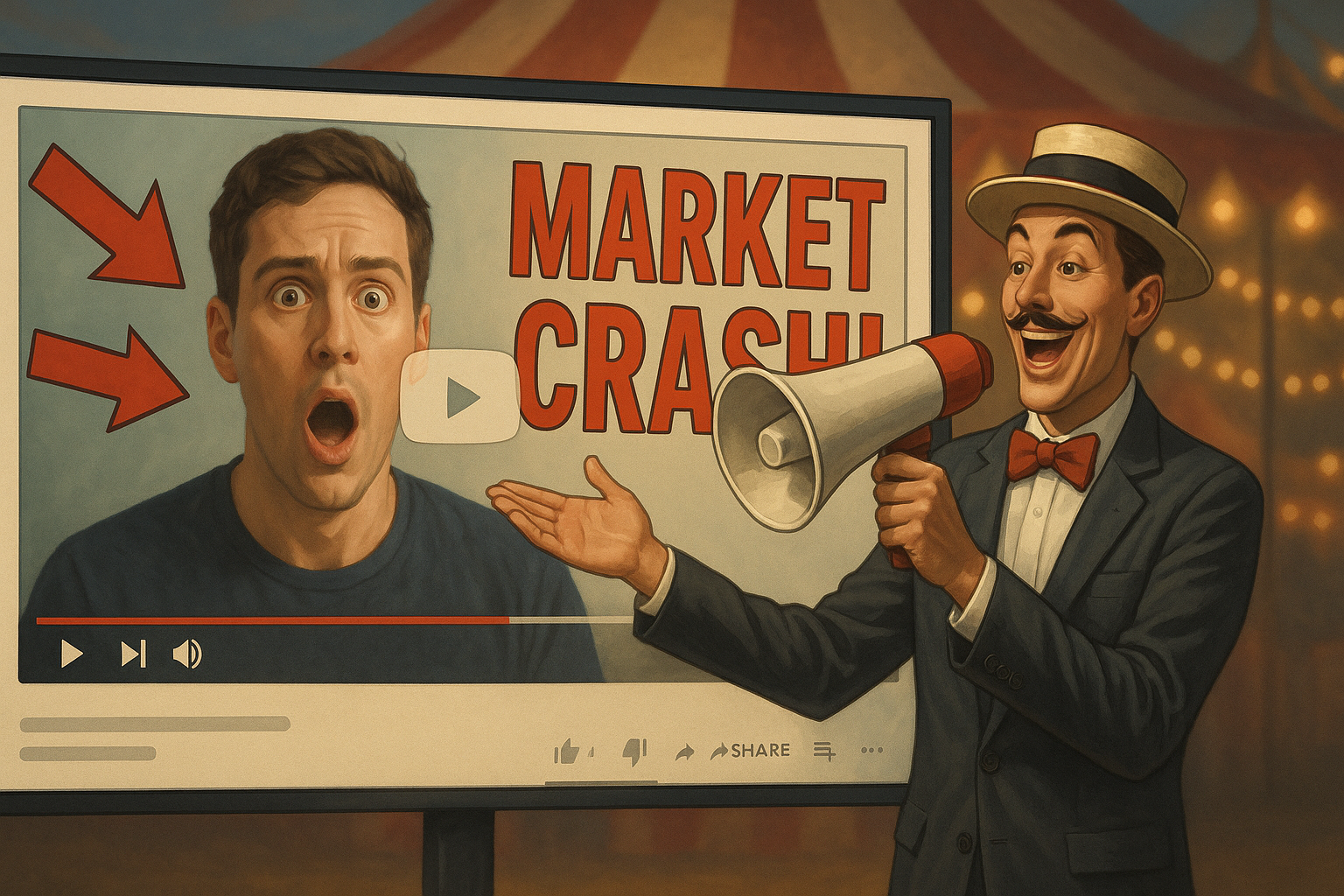The financial corner of YouTube has devolved into something resembling a digital carnival barker convention. You know the type—thumbnails with creators looking shocked beside giant red arrows, ALL-CAPS warnings about MARKET CRASHES, and titles promising financial Armageddon by next Tuesday.
It wasn't always like this.
Having monitored this space for years now, I've watched the slow transformation of once-helpful financial content creators into engagement-optimization machines. And look, I get it—these folks are responding to the cold, hard metrics that determine their livelihoods. The algorithm rewards fear, and creators are simply following the money.
But at what cost?
The problem extends beyond just being annoying. When everything is portrayed as a five-alarm financial fire, viewers develop a kind of disaster fatigue. The boy who cried "STOCK MARKET COLLAPSE" loses credibility after the fifteenth non-collapse. And when (not if) a genuine market disruption occurs, these creators will have already exhausted their most dramatic rhetoric on routine market fluctuations.
"What we're seeing is classic incentive misalignment," explained Dr. Sarah Jenkins, who studies digital media economics at Columbia. "Content creators are optimizing for clicks rather than accuracy, which ultimately degrades the information ecosystem for everyone." (I spoke with Jenkins last week after noticing this trend accelerating across multiple channels.)
Finding Signal Through the Noise
So where can serious investors turn? There are still outposts of sanity in this increasingly frenzied landscape.
Patrick Boyle offers consistently level-headed analysis with that characteristic British understatement that feels refreshing amid the hysteria. His hedge fund background means he doesn't need to compensate with sensationalism—the expertise speaks for itself.
The Plain Bagel (run by Richard Coffin) delivers complex financial concepts without the hyperbole. His videos won't get your adrenaline pumping, but they might actually... you know... teach you something useful.
For those interested in tech stocks specifically, Beth Kindig's analysis stands out. She digs into actual business fundamentals—a radical concept in today's landscape!
What distinguishes these creators isn't production value (though that's fine too). It's their commitment to substance over spectacle.
Beyond YouTube's Horizon
Maybe the answer isn't finding better YouTube channels but diversifying information sources entirely.
Industry-specific newsletters like Stratechery for tech or The Diff for markets often provide deeper analysis than video content ever could. They're not competing for your eyeballs in the same algorithm-driven thunderdome.
Analyst reports from major investment banks—increasingly available to retail investors through brokerage platforms—offer data-driven perspectives (though, yes, with their own biases).
And here's a radical thought: why not go straight to primary sources? Company earnings calls and investor presentations cut out the middleman entirely. I've found quarterly earnings calls particularly revealing—especially when executives start dancing around analysts' tough questions.
Twitter/X remains valuable if (and it's a big if) you curate carefully. The key is following actual practitioners rather than "influencers" whose main qualification seems to be owning expensive watches and Miami penthouses.
The Expertise-Entertainment Tradeoff
The financial content ecosystem operates on what I call the "expertise-entertainment gradient." The most knowledgeable voices often deliver their insights with all the excitement of reading tax code, while the most engaging presenters frequently lack substantive expertise.
Finding those rare creators who deliver both substance and style? That's the holy grail.
The cruel irony? By avoiding financial clickbait artists, you might actually become better informed about genuine market risks. Real market disruptions rarely announce themselves with convenient warning labels. They emerge from blind spots that nobody—especially not the loudest voices in the room—is questioning.
As one hedge fund manager told me (requesting anonymity because he wasn't authorized to speak publicly), "The YouTuber screaming about a crash is usually the last person who'll see it coming."
So what channels have you found valuable? The collective wisdom of thoughtful investors often surfaces gems that algorithms won't recommend. After all, finding signal in noise is what investing is all about—whether in markets or in the media that claims to explain them.
